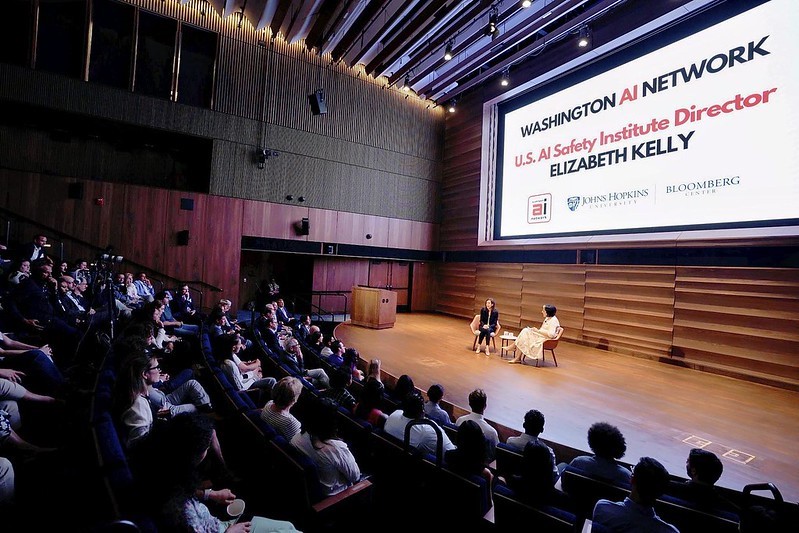What to know about the U.S. artificial intelligence safety institute
The institute was founded by the Commerce Department in 2023; its director, Elizabeth Kelly, lays out its mission

For Elizabeth Kelly, director of the U.S. AI Safety Institute, ensuring AI is used safely is vital not just to protect citizens, but to grow the economy.
“Safety enables trust, which enables adoption, which enables innovation. And driving that innovation is really our north star at the AI Safety Institute,” she said during a recent interview with Tammy Haddad, founder of the Washington AI Network.
The Commerce Department founded the U.S. AI Safety Institute last year, following President Joe Biden’s executive order on artificial intelligence.
Here are three key takeaways from her conversation with Haddad, held at the Johns Hopkins University Bloomberg Center:
- Cultivating an “ecosystem of safety”
The U.S. AI Safety Institute is focused on building a network of AI experts, including academics and entrepreneurs who “are all helping hold companies to account and ensure that these systems are safe, secure, trustworthy,” Kelly said.
The institute is currently establishing agreements with leading AI companies and labs so it can test their systems before they are deployed widely. It’s also working to bring together international allies to establish multilateral agreements on AI testing.
“The State Department is very much involved,” Kelly said. “They’ve been an incredibly close partner on all of our efforts here because we really view it as essential that America leads not only on AI innovation, but also leads on AI safety, and the State Department agrees with that.”
- Regulating for the future—and now
Kelly stressed that her organization is developing guidelines and best practices that address current issues, as well as emerging ones. The institute’s document on managing the risks associated with certain types of AI models, known as “dual use,” focused on the possibility the model could be used to perpetuate a cyber-attack in the future, as well as the ongoing increase in AI-generated child sexual abuse material.
- Establishing the agency’s future
The Senate Commerce Committee recently sent a bill to the full Senate that will authorize the U.S. AI Safety Institute. Kelly is also keeping an eye on the appropriations process.
“This is resource intensive,” she said. “There’s a lot more we can do to take on a broader risk of a range of harms to do more of the scientific discovery if we have those resources.”